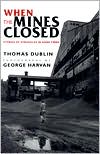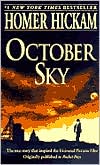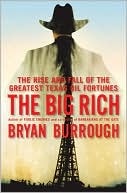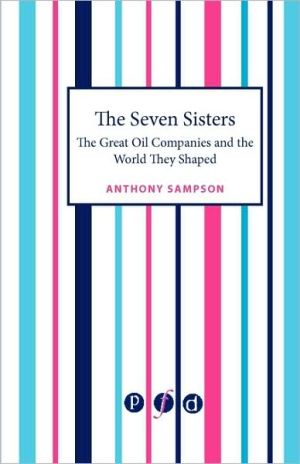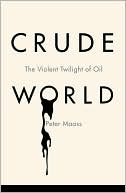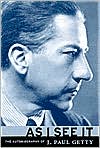When The Mines Closed: Stories of Struggles in Hard Times
The anthracite region of northeastern Pennsylvania, five hundred square miles of rugged hills stretching between Tower City and Carbondale, harbored coal deposits that once heated virtually all the homes and businesses in Eastern cities. At its peak during World War I, the coal industry here employed 170,000 miners, and supported almost 1,000,000 people. Today, with coal workers numbering 1,500, only 5,000 people depend on the industry for their livelihood. Between these two points in time...
Search in google:
The anthracite region of northeastern Pennsylvania, five hundred square miles of rugged hills stretching between Tower City and Carbondale, harbored coal deposits that once heated virtually all the homes and businesses in Eastern cities. At its peak during World War I, the coal industry here employed 170,000 miners, and supported almost 1,000,000 people. Today, with coal workers numbering 1,500, only 5,000 people depend on the industry for their livelihood. Between these two points in time lies a story of industrial decline, of working people facing incremental and cataclysmic changes in their world. When the Mines Closed tells this story in the words of men and women who experienced these dramatic changes and in more than eighty photographs of these individuals, their families, and the larger community.Award-winning historian Thomas Dublin interviewed a cross-section of residents and migrants from the region, who gave their own accounts of their work and family lives before and after the mines closed. Most of the narrators, six men and seven women, came of age during the Great Depression and entered area mines or, in the case of the women, garment factories, in their teens. They describe the difficult choices they faced, and the long-standing ethnic, working-class values and traditions they drew upon, when after World War II the mines began to shut down. Some left the region, others commuted to work at a distance, still others struggled to find employment locally.The photographs taken by George Harvan, a lifelong resident of the area and the son of a Slovak-born coal miner, document residents' lives over the course of fifty years. Dublin's introductory essay offers a briefhistory of anthracite mining and the region and establishes a broader interpretive framework for the narratives and photographs. Book Magazine "... Dublin's oral history presents a dreary portrait of those living in Pennsylvania's coal mining Panther Valley. Using first-person accounts of several area residents (six men, seven women), the author provides a steady stream of their "stories of struggles in hard times." Their narratives capture America's immigrant middle class, from bowling and bootleg whiskey to religion, at their best and in pure drudgery. Though local newspaper photographer and coal-miner's son George Harvan's photographs suggest that life went on after the mines closed, the results, lacking a wider scope, are ordinary."Scott Holleran
\ From the Publisher"A poignant and powerful testimonial in words and photographs to a vanished way of life."-Cathy N. Davidson, author with photographer Bill Bamberger of Closing: The Life and Death of an American Factory\ "We hear much these days about the dignity of work. When the Mines Closed reminds us again that it is not work that dignifies life, it is people who dignify work. This is especially so when that work is dangerous, difficult, and demeaning. It is this struggle to maintain human dignity in the face of a changing world which illuminates the testimonies Dublin has collected. Through the prism of these narratives we are allowed entry into a very special place at a very special time."-Ronald J. Grele, Columbia University\ "What makes this volume of superbly edited oral histories of deindustrialization so special is the rich dimension Thomas Dublin brings, in two senses, to a subject too often approached in terms of contemporary victimization. His topic is not recent plant closings but rather the transformation of the Pennsylvania anthracite region in the 1950s, a story his subjects place in complex biographical and historical perspective more than thirty years later. And far more than its title would suggest, the interviews focus on the fuller fabric of individual, family, community, and work life that subjects brought to the closings and the struggles-and through which they understand and interpret their own historical experience. All this is complemented by a remarkable archive of both historical and current photographs, individual and contextual, by regional photographer George Harvan. The result is a landmark study in the growing documentary literature of industrial and regional transformation. It demonstrates how life histories and life images, beyond their intrinsic human dimension and power, open instructive, indispensable historical vantages onto immensely complex social processes and experiences."-Michael Frisch, coauthor with photographer Milton Rogovin of Portraits in Steel, winner of Oral History Association 1993-1995 Book Prize\ "One of Thomas Dublin's most striking qualities is his commitment to uncovering every possible shred of evidence in his pursuit of historical 'truth.' Another is the grace and clarity of his prose."-Jacquelyn Dowd Hall, University of North Carolina, Chapel Hill\ "The interviews are at times disjointed, yet the overall impact, augmented by photographs, is considerable. Recommended for undergraduates and above."-Choice\ "An important contribution to the history of the coal industry and its economic and social impact. . . . Dublin's oral history is culled from 90 interviews that considered what it was like and what it meant to work in the anthracite mines of eastern Pennsylvania's Panther Valley and what life was like in a mining community. At their peak, the mines in this region employed nearly 175,000 workers, mostly immigrants; by the time Dublin began his interviews, only 1,400 persons were left working in these mines. Six men and women tell how they toiled in the mines or else how they struggled to help their families survive. Their moving stories are enhanced by a collection of nearly 100 photographs."-Booklist\ "History professor Dublin's look at the anthracite coal region of northeastern Pennsylvania addresses important questions, not just for the beleaguered mining industry, but for American labor in general. By focusing on a largely unschooled, working-class population of former coal miners and their wives, he chronicles how people adapt to economic upheaval. . . . Framed by Dublin's excellent introduction, the book is made up of oral histories."-Publishers Weekly\ "An important title on social change."-Midwest Book Review\ "When the Mines Closed is a welcome addition to the rapidly growing collection of oral histories of industrial workers."-Pennsylvania Magazine of History and Biography\ "Thomas Dublin's When the Mines Closed, takes the reader inside the lives of several families within three mining communities of south-east Pennsylvania. . . This book provides much needed voices to the struggle of coal-mining families, and the economic and social fall-out of the coal industry's downsizing, mechanization and inability to provide job security for hardworking families and their communities . . . offers evidence of the often illusory realization of democracy for workers in the U.S. under a system that benefits corporations often at the expense of the common man and women."-Charles Chamberlain, Tulane University. Labor History, February 2001, Vol. 42, No. 1\ \ \ \ \ \ "... Dublin's oral history presents a dreary portrait of those living in Pennsylvania's coal mining Panther Valley. Using first-person accounts of several area residents (six men, seven women), the author provides a steady stream of their "stories of struggles in hard times." Their narratives capture America's immigrant middle class, from bowling and bootleg whiskey to religion, at their best and in pure drudgery. Though local newspaper photographer and coal-miner's son George Harvan's photographs suggest that life went on after the mines closed, the results, lacking a wider scope, are ordinary."\ Scott Holleran\ \ \ \ Publishers WeeklyHistory professor Dublin's look at the anthracite coal region of northeastern Pennsylvania addresses important questions, not just for the beleaguered mining industry, but for American labor in general. By focusing on a largely unschooled, working-class population of former coal miners and their wives, he chronicles how people adapt to economic upheaval. While the book is framed by Dublin's excellent introduction, the bulk of the text is made up of oral histories. Twelve women and men--all of whom are now in their 70s and 80s--address the centrality of work, and analyze how ethnic, religious and gender-based associations mediated work conflicts and financial want. Their recollections span the 20th century, and move from mining's peak during WWI--when 175,000 men were employed and one million were supported by the industry--to 1992, when the mines employed 1400 and supported approximately 5000. As oil, natural gas and electricity replaced coal heat, most of the workers had to find alternate employment. Many of the men went to plants like Bethlehem Steel; women for the most part headed for textile factories. Their testimony about this translation is often extremely moving; on the other hand, more probing about alluded-to ethnic and racial conflicts, attitudes toward unions and worker associations, and changes in family structure would have made the book more resonant. Eighty photos. Sept.\ \ \ \ \ Library JournalDublin history, SUNY at Binghamton is the author of a number of labor history titles, including Women at Work 1979. He focuses here on the coal mine closings in northeastern Pennsylvania, using oral history to "reconstruct how relatively ordinary residents in the region experienced economic decline." From 90 interviews, he selected 12 for this book. Dublin provides background on mining in the region, and he has done an excellent job of editing the interviews to bring these voices alive. While the miners and their wives have led hard lives, one is left with an impression of their great pride in work done well. The photographs by Harvan, a lifelong resident of the area, nicely complement the narratives. Highly recommended for labor history collections.--Linda L. McEwan, Elgin Community Coll., IL\ \
